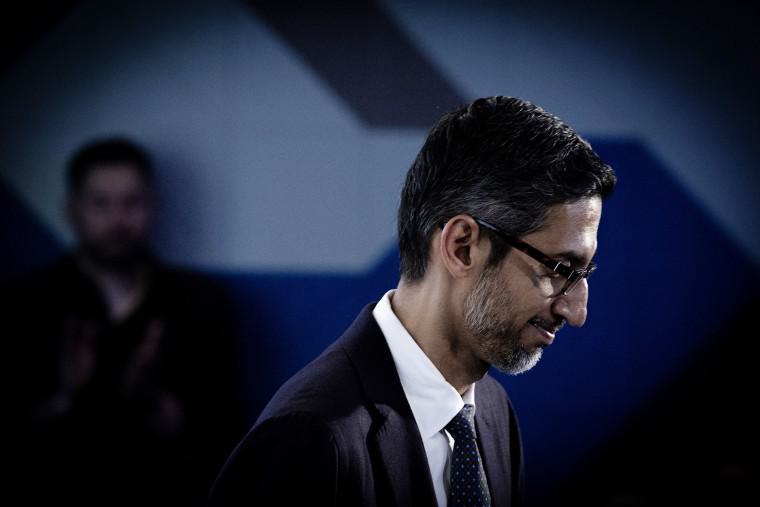Request for Proposal: Choosing A Negotiation Strategy For Success - Dispatch Weekly
April 8, 2021 - Reading time: 8 minutes

This article was written in collaboration with John Clements a negotiation consultant at The Gap Partnership.
When procuring complex goods and services, procurement departments should think carefully about what negotiation strategy and behaviours they are going to deploy when issuing a Request for Proposal (“RFP”) in order to ensure the ultimate success of the contract.
Ask yourself this question. When a procurement or sourcing department issues an RFP, is it intending to adopt a competitive negotiation strategy? Equally, is it planning to behave in a competitive manner? You might be thinking that the answer to these questions has to be yes. Well, not necessarily. Before I explain why let me provide some context.

The RFP is a business tool widely used across business sectors to procure both fairly simple, and more complex, products and services. Of course, the RFP and its process have evolved over the years, moving from vast arrays of paper documents to a cloud-based electronic system. As procurement has evolved, so too the RFP has become less of a clerical exercise for the purchasing of straightforward goods, to more of a strategic tool that at the same time encourages competition. The early focus on price in the issuance of RFPs has become more sophisticated, with other factors such as quality, cultural fit and service levels coming into play.
Notwithstanding this evolution, it is still very common in procurement departments to hear phrases such as “get the best deal” by running an RFP process. But does the team issuing the RFP consciously think about what negotiation strategy they are intending to use and what behaviour they are going to adopt to implement that strategy?
Maybe they don’t, because the whole process of running an RFP appears to be set-up to be “competitive”. For example, when issuing an RFP, it is common to state in the instructions that it is a competitive process and that it will be issued to multiple potential suppliers. Therefore, many might think that it must follow that an RFP is a classic example of adopting a competitive negotiation strategy. A selection process is run with a final down-select to two (or more) parties followed by a request for a Best and Final Offer (BAFO). The buying organisation puts itself in the best position by maintaining competitive tension between the parties. So far, this certainly feels like a competitive negotiation strategy
NEGOTIATION STRATEGY
At this point, it is worth defining what we mean by a competitive negotiation strategy:
‘A conscious decision to pursue a self-interest agenda, focusing on a win-lose approach or value distribution’
Equally, we also need to define what we mean by collaborative negotiation strategy:
‘A conscious decision to pursue a joint agenda, focusing on win-win approach or value creation’
With these definitions in mind, procurement departments should consider asking some questions to establish what is really at stake when they issue the RFP:
Why go to the effort of issuing an RFP and running a 4 – 6 month process for the procurement of complex goods and strategic services, and only focus on a self-interest agenda?
Why would a supplier engage in such a process if they are going to ultimately “lose” even if they win the bid?
If you are about to contract with another party in a long-term partnership arrangement, do you really want the other party to “lose”?
Do you want your business partner/supplier to be operating on such wafer-thin margins that they might need to re-negotiate the contract, pull their business or even worse, go bust?
Therefore, it could be argued that companies who are issuing RFPs for the procurement of complex goods and strategic services for a long term partnership should really be thinking in terms of a collaborative negotiation strategy. That is, “I win, but the other party wins as well.”
Example 1
A classic example of where the opposite to the above applied was in the auction off of the 3G mobile phone licences in the UK in the early 2000s. The UK Government received a £20bn plus windfall from the auction process (after 149 rounds!). In essence, the government was procuring complex goods and services but using a competitive negotiation strategy (via the means of an auction process, NOT an RFP). The bids made were so large that it resulted in some of the bid winners having to make subsequently significant write-offs. Therefore, although the UK Government did receive a windfall, was consideration given to their negotiation strategy and the potential impact it would have on the winning bidders?
However, if your only concern is to get the lowest price (buyer) it is likely to be the case that you are dealing in a commoditised good or service. You don’t really care about the outcome for the other party and as such, it is likely that as a procurement department, you will be running a reverse-auction and using an e-procurement tool (NB the opposite of this would be a seller using something like eBay).
Therefore, the more commoditised the product or service is, the more likely it is that the means of procurement will be underpinned by a competitive negotiation strategy. It is important to note here that a reverse auction is far more likely to work with multiple suppliers, commoditised goods and services and where the only concern is price.
NEGOTIATION BEHAVIOUR
Of course, we are all grown-ups in the B2B world and no-one would ever think of adopting competitive behaviour in running an RFP…would they? The answer is really to adopt the behaviour that has the best chance of making your strategy a success.
So if you need to be supportive (collaborative behaviour) to make your competitive negotiation strategy a success, then so be it.
Example 2
Estate agents should in theory want to maximise the sale price of a property for the seller. To do this, they typically adopt a competitive negotiation strategy – finding multiple buyers, playing them off against each other, controlling the what and when of information. However, for this to work, they really need to adopt collaborative behaviour (although some might disagree) and keep the buyers as sweet as they can and in the game as long as possible. Therefore, they need to be collaborative in behaviour style with buyers. However, sellers should be beware of whose interests estate agents really have at heart – as reported in the book Freakonomics, a study of Chicago house sale data found that (real) estate agents kept their own houses on the market 10 days longer and sold for 3% more than houses sold on behalf of clients!
However, it might be the case that you need to be cold, distant and inflexible (competitive behaviours) to make your collaborative negotiation strategy a success. Alternatively, you might need to adopt a mix of the two behaviour types. There is no right answer, but don’t assume that behaviour type necessarily follows strategy type.
CONCLUSION
When issuing an RFP, procurement departments should consciously think about the negotiation element of the RFP process and what strategies and behaviours they are going to adopt. Is their negotiation strategy really going to achieve the desired outcome once the contract goes live? What is the nature of the goods and services they are buying and is their negotiation strategy in line with these?
They should treat the strategies and behaviours separately – one doesn’t necessarily follow the other. Moreover, they should adopt behaviours that give them the best chance of executing their chosen strategy and making the deal a success. This might mean adopting different behaviours during the course of a negotiation.

DW Staff
David Lintott is the Editor-in-Chief, leading our team of talented freelance journalists. He specializes in covering culture, sport, and society. Originally from the decaying seaside town of Eastbourne, he attributes his insightful world-weariness to his roots in this unique setting.




